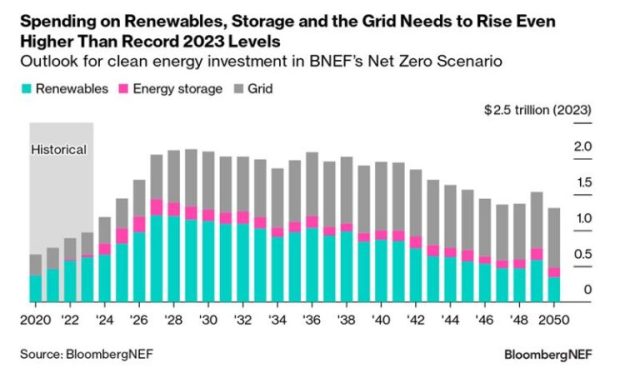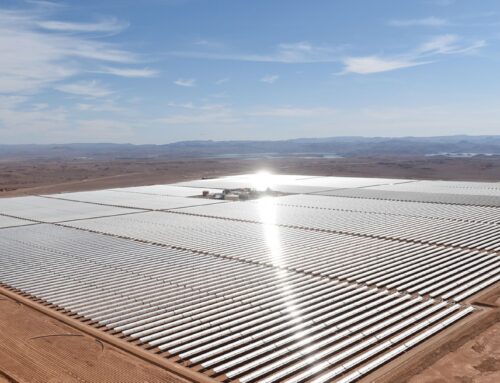BNEF estimates $1 trillion per year investment to triple renewable energy capacity
October 5, 2024
Despite progress, nations are not on track to meet the target of tripling global renewable energy capacity by 2030, according to the Unlocking Investment to Triple Renewables report, unveiled at the Global Renewables Summit in New York City.
The report, published by BloombergNEF (BNEF), emphasizes the need for accelerated investment in battery storage, power grids, and increased support for emerging markets and developing economies to get back on track.
The target to triple renewables by 2030 was set at last year’s COP28 climate conference in Dubai, where nearly 200 Parties agreed to ramp up renewable capacity from 2022 levels. This aligns with BNEF’s Net Zero Scenario, which outlines a pathway to achieve net-zero emissions by 2050 while keeping global warming well below 2°C.
Since COP28, the energy transition has gained momentum, thanks to falling costs for solar and battery storage, and the continued affordability of wind energy. BNEF now expects global renewable power capacity to reach 10.3 terawatts by 2030, up from 4.1 terawatts at the end of 2023. However, this still leaves the world 13 percent short of the capacity needed to stay on a net-zero pathway.
“Since COP28, we’ve seen real progress in renewable energy investment, but it’s not happening fast enough,” said Michael R. Bloomberg, UN Special Envoy on Climate Ambition and Solutions. “The more the public, private, and nonprofit sectors collaborate to remove barriers to investment, the better chance we have of hitting our net-zero goals, growing the global economy, and saving lives.”

Meredith Annex, co-lead author of the report, added, “The target is still achievable, but governments must remove obstacles to renewable energy growth, especially in developing countries, and prioritize grid expansion to support clean energy.”
To meet the tripling goal, BNEF estimates $1 trillion per year in renewable energy investment is needed through 2030, alongside $193 billion annually for battery storage and $607 billion for grid infrastructure. While this figure is ambitious, the declining costs of renewables make it feasible. In the first half of 2024, an estimated $312 billion was already invested in renewables, with $221 billion going to solar and $91 billion to wind.
Solar energy, which has seen prices drop dramatically, is expected to lead the way in reaching the tripling target. However, its seasonal limitations highlight the need for more investment in wind, storage, and grid modernization to ensure a stable transition to net zero.
China remains the largest market for renewable energy investment, with $130 billion invested in the first half of 2024 alone. Brazil is also on track to meet its goals, while Europe, the US, and India, despite strong policy frameworks, must accelerate their efforts to stay aligned with the global goal.
Search
RECENT PRESS RELEASES
Related Post




